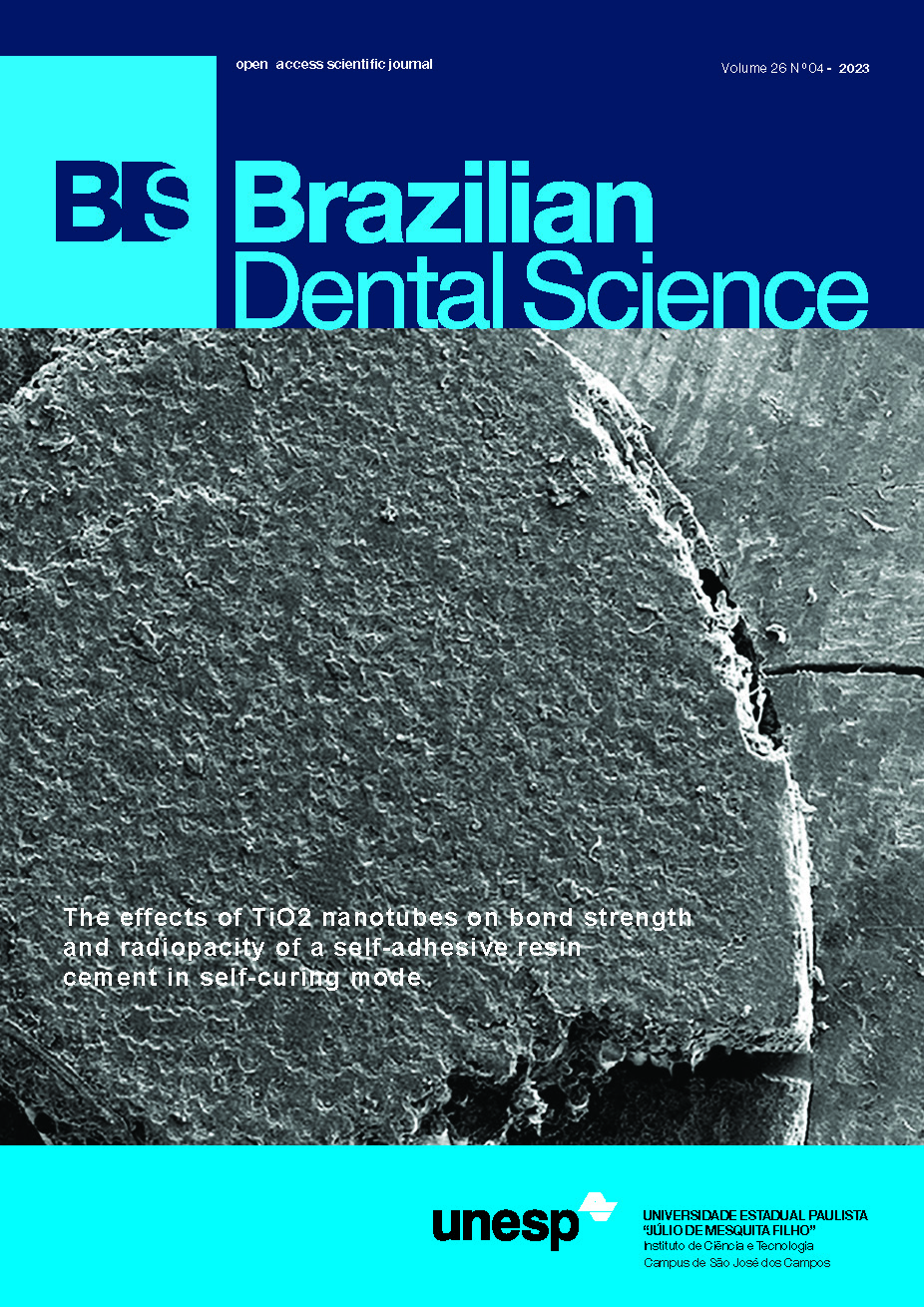Success rate of silver nano-particles in comparison to silver diamine fluoride in management of deep carious lesions: a randomized controlled clinical trial
DOI:
https://doi.org/10.4322/bds.2023.e3956Abstract
Objective: Evaluate the effectiveness of nanosilver fluoride in comparison to silver diamine fluoride in management of deep carious lesions. Material and Methods: This double-blinded randomized controlled clinical trial included thirty-six patients with deep carious mandibular molars. Patients were recruited form the outpatient clinic of Suez canal university, Egypt and randomly allocated into three groups, Nanosilver fluoride group, Silver diamine fluoride group and control group. For all groups, teeth were isolated by rubber dam. Access was done followed by partial caries removal. Silver diamine fluoride or Nanosilver fluoride were applied, and all teeth were restored with composite resin restorative. Patients were recalled after 3 and 6 months to follow-up the pulp vitality. R-statistical analysis software for Windows, version 4.1.1, was used to conduct the statistical analysis Results: At 3 month, for all groups, all teeth were successful. After 6 months, for silver diamine fluoride group, a single case failed. Regarding the nanosilver fluoride, all cases were successful. For the control group, two cases failed. No statistically significant difference was found between the tested groups. Conclusion: Application of 5% Nanosilver to fluoride varnish has similar clinical efficacy as silver diamine fluoride in arresting the dentin caries progression.
KEYWORDS
Dental caries; Dental pulp disease; Nanoparticles; Pulp capping; Silver diamine fluoride.
Downloads
Published
How to Cite
Issue
Section
License
Brazilian Dental Science uses the Creative Commons (CC-BY 4.0) license, thus preserving the integrity of articles in an open access environment. The journal allows the author to retain publishing rights without restrictions.
=================




























